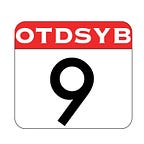Bloody Sunday in London
I intend to cover every single Bloody Sunday at some point in this series. This is the first of 19, both chronologically and on OTDSYB.
Hello and welcome to On This Date, Some Years Back. Today is November 13, 2017, and on this date, 130 years back, in 1887, protestors marching against unemployment and coercion in Ireland were attacked by the London Metropolitan Police and British Army in what became known as Bloody Sunday. The first of nineteen events to be so named.
Ireland (the entire island) was a part of the United Kingdom since 1800, and by the 1880’s things were going poorly for everyone. In the 1840’s, during the Great Famine, Ireland’s population dropped from 8 million to less than 6 million due to deaths and emigration. Emigration from Ireland continued in large numbers for decades to come. All the while, there was a Home Rule movement growing within Ireland, that would have them seek independence from the United Kingdom. This debate would rage into the 20th century.
Meanwhile, in England, Tory governments were passing laws, known as Coercion Acts, intended to suppress unrest Ireland by impinging upon many civil rights. The Long Depression which started in 1873 exacerbated things by causing food prices to plummet, which drove rural Irish farmers out of work, increasing unemployment in the UK. These farmers were forced to move to towns and cities seeking work as laborers. The Bloody Sunday March was the climax of over two years of demonstrations over unemployment.
On Bloody Sunday itself, over 10,000 protesters marched to Trafalgar Square in London. There they were met by around 30,000 spectators, and 2,400 police and soldiers tasked with ending the demonstration.
About 400 of the protests, including several prominent leaders were arrested. As the protest devolved into a riot, though. In total 75 people suffered serious injuries. Two police officers were stabbed, one protester was stabbed with a bayonet, and many other protestors were beat with truncheons or trampled by horses.
One week later, on November 20, another protest resulted in more violence including the death of Alfred Linnell, whose funeral became yet another rally for the cause.
Ultimately, very little was solved or settled.
Thanks for reading, and be sure to check back tomorrow for a pioneering journalist one-upping Phileas Fogg.
Creating quality content on a daily schedule requires a massive commitment, and my desire is to not only do that, but expand into even more mediums (audio podcasts, web videos, etc.). If you enjoy these posts, or would like for them to be available in other formats, please consider supporting me on Patreon. Just $1 a month will help a ton, as well as get you access to exclusive content. Thanks.
